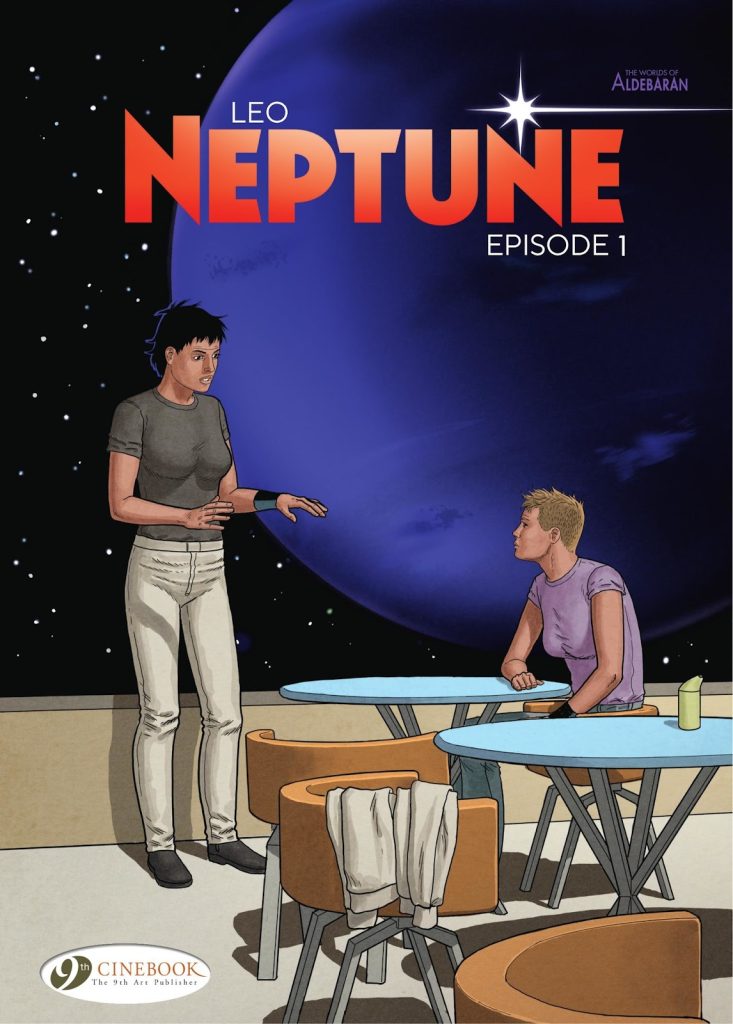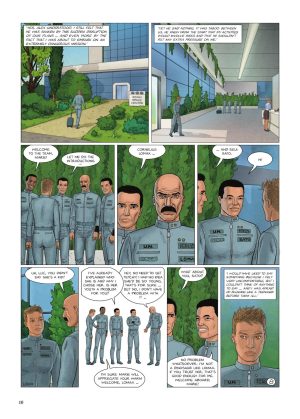Review by Karl Verhoven
Neptune is French-based Brazilian creator Leo again picking up on his far ranging humanist science fiction series for a sixth arc, but this his briefest to date in only occupying two volumes. It’s set a few years on from Return to Aldebaran, where those who survived The Survivors made the acquaintance of series protagonist Kim Keller. Be warned, Leo makes no allowance for anyone who’s not read previous instalments.
Marie Servoz has just completed her UN special training course and her experience of times predating the modern era sees her immediately promoted to a five person specialist team. A weirdly unsettling sequence occurs when Marie is introduced to her team-mates, one of whom she already knows. Two are named, but the Black person on the team is seen, but ignored. What are we to make of that? They’re only named in passing later, when introduced as a life partner, but the role is minimal, and if that’s the case, why have a token Black person at all? Why not have a team of four? Based on there being a Black woman prominently featured later it seems exceptionally clumsy tokenism rather than anything more questionable.
The mission assigned is the mystery of a spacecraft resembling a 1950s flying saucer approaching a space station, parking and not responding to hails. It’s discovered to have originated from an even larger vessel slowly making its way toward Earth.
Leo’s work continues to have a fascination with asking big existential questions, continues to showcase incredible creatures, the art is detailed and precise, and amid all the talk there’s a captivating mystery. When Kim’s wondrous journey began in the 1990s drone technology hadn’t been invented, yet they provide Leo with a viable option in Neptune. With Leo, though, there’s never a sign of his flaws being rectified. The people are stiff and posed, and the dialogue remains woeful. “No! No Mai Lan! I forbid you from sleeping with a Tsalterian!”, says Kim, “Oh you are impossible!” Be they male or female, or indeed anything between, Leo’s people are almost clones, distinguished by hair colour and skin tones. Marie, last seen with long hair, now joins the cropped brigade explaining it’s more practical.
Given the wonders within, the cover is astonishingly understated. It depicts the final scene when a decision is made leading into Episode 2. As ever, there’s much to admire about Leo’s ambition, but he’s a frustrating creator, and the wonder is accompanied by much that unnecessarily prevents focus on what matters in story terms.





